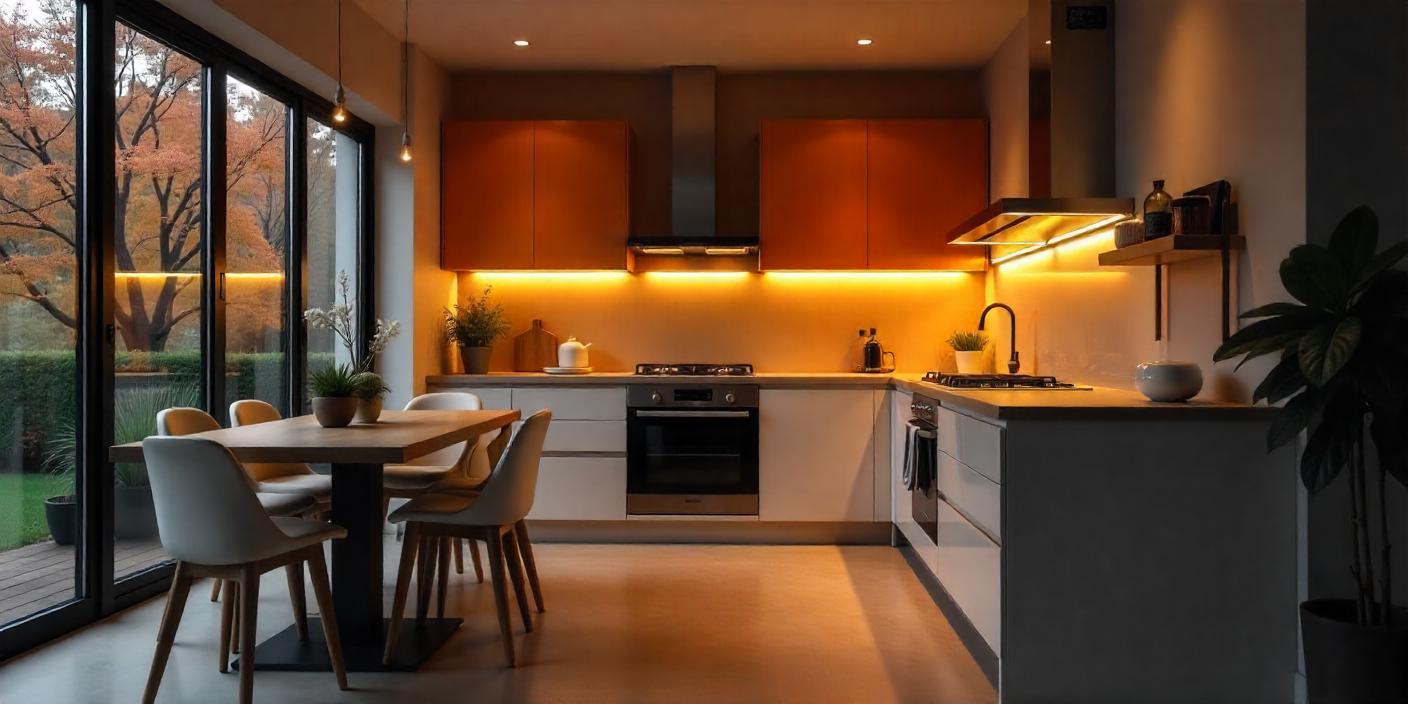Aluminum Kitchen Cabinets: Sleek Style Meets Lasting Durability
Revamping your kitchen? Kitchen cabinets are a focal point, impacting both functionality and aesthetics. While numerous materials abound, aluminum kitchen cabinets have surged in popularity for a reason:
Enduring Strength: Kitchens are high-traffic zones. Aluminum cabinets offer exceptional durability, standing up to daily wear and tear with ease.
Modern Elegance: Aluminum's sleek finish adds a touch of contemporary sophistication to any kitchen design.
Hygiene Hero: Aluminum's inherent resistance to corrosion makes it a hygienic choice, perfect for a space where cleanliness is paramount.
But with a plethora of aluminum cabinet options on the market, navigating the selection process can feel overwhelming. Fear not! This guide will equip you with the essential factors to consider when choosing the perfect aluminum kitchen cabinets for your dream kitchen.
What Is Aluminium Kitchen Cabinets?

Aluminum kitchen cabinets are a rising star in the world of kitchen design. But what makes them so special?
Built to Last: Kitchens are high-traffic areas that face constant exposure to moisture, heat, and spills. Aluminum's inherent durability makes it a perfect choice. These cabinets can withstand everyday wear and tear with ease, ensuring a long-lasting investment.
Lightweight Champion: Despite their strength, aluminum cabinets are surprisingly lightweight. This translates to easier installation and potentially less stress on your walls, especially for wall-mounted cabinets.
A Shield Against Corrosion: Unlike some materials, aluminum boasts exceptional resistance to corrosion. This means you don't have to worry about rust or water damage, making it a hygienic option for your kitchen environment.
Simple Maintenance, Lasting Beauty
Aluminum cabinets are a breeze to maintain. Regular cleaning with a damp cloth and mild detergent keeps them looking their best. For an extra touch of shine, occasional polishing can revive their luster.
Construction Know-How
Aluminum kitchen cabinets typically feature a frame constructed from strong aluminum extrusions. These frames are then assembled using various methods, such as welding, screws, or interlocking mechanisms.
Tips To Choose Aluminium Cabitnet #1: Thickness Of Aluminium

Choosing aluminum kitchen cabinets offers a perfect blend of style and durability. But with all those gleaming options, a crucial question arises: How thick should the aluminum be?
Thickness Matters: Tailoring Cabinets to Your Needs
There's no one-size-fits-all answer when it comes to aluminum cabinet thickness. Here's why:
Size Matters: Larger cabinets require thicker aluminum for optimal support. Think of it like building shelves – wider shelves need sturdier materials to hold heavier items.
Weight Capacity: Consider the weight you'll be storing. If you plan on packing your cabinets with heavy dishes or appliances, opt for a thicker aluminum body.
The 1.2mm Threshold: A Benchmark for Strength
A minimum thickness of 1.2mm is generally recommended for aluminum kitchen cabinets. This ensures they can withstand everyday wear and tear without warping or bending.
Beware the Bargain Basement:
If a supplier suggests aluminum cabinets with a thickness of only 0.5mm, proceed with caution. These cabinets may be more susceptible to dents and may not offer the long-lasting durability you deserve.
Invest in Quality, Invest in Peace of Mind
By understanding the importance of aluminum cabinet thickness, you can make an informed decision. Choosing cabinets with a thickness of 1.2mm or greater provides a solid foundation for a beautiful and functional kitchen that will stand the test of time.
Tips To Choose Aluminium Cabitnet #2: Customize Aluminium Cabinet Doors & Frames

Aluminum's Artistic Appeal: Choosing Doors and Frames for Your Kitchen
Aluminum kitchen cabinets offer a stunning canvas for creative expression. But with so many door and frame options, how do you decide? The key lies in considering your overall kitchen design.
Matching Your Vision:
Aluminum cabinets come in a vast array of styles and finishes, allowing you to seamlessly integrate them into your existing kitchen aesthetic. Do you crave a sleek and modern look? Classic elegance? The possibilities are endless!
Glass Doors: A Contemporary Touch
For a touch of modern flair, consider incorporating glass doors into your aluminum cabinets. This option not only injects a contemporary vibe but also allows you to showcase your prized dishes or decorative items.
Exploring Glass Options:
Aluminum cabinets offer two popular glass door choices:
3G Glass: This option features visible aluminum frames around the glass panels. It's available in a wide range of colors, making it easy to find a perfect match for your kitchen. 3G glass doors are known for their affordability and ease of maintenance.
4G Glass: For a truly streamlined look, consider 4G glass doors. These boast a frameless design, where the aluminum frame is cleverly concealed behind the glass panel. While slightly more expensive than 3G glass, 4G doors offer a touch of luxury and visual openness.
Tips To Choose Aluminium Cabitnet #3: Carcass And Front & End Panels

Beyond Thickness: Understanding Material Strength in Aluminum Cabinets
We've already discussed the importance of aluminum thickness for your kitchen cabinets. But thickness is just one piece of the puzzle. Let's delve deeper into understanding the material itself.
Material Matters: Strength and Durability
The specific type of aluminum used in your cabinet carcass and front & end panels plays a crucial role in overall strength and durability. High-quality aluminum alloys offer superior support compared to lower-grade materials.
Thickness as a Teammate, Not a Lone Wolf
While thickness is important, it works hand-in-hand with material quality. A thicker cabinet made from a lower-grade aluminum might still be susceptible to bending or deformation under heavy loads.
The 1.2mm Benchmark: A Minimum Standard
As a general rule, a minimum thickness of 1.2mm is recommended for aluminum kitchen cabinets. This ensures a good balance between weight and support for everyday use.
Partnering with a Reputable Supplier
The best way to ensure you're getting high-quality aluminum cabinets is to partner with a reputable supplier. Look for a company that uses high-grade aluminum alloys and prioritizes durability in their products.
Tips To Choose Aluminium Cabitnet #4: Aluminium Bar Width

Striking a Balance: Aluminum Bar Width in Your Cabinets
Aluminum kitchen cabinets boast impressive strength, but did you know the width of the aluminum bars plays a role? Let's explore how bar width impacts both functionality and aesthetics.
Tailoring Support: Width for Different Cabinet Sizes
The size of your aluminum kitchen cabinets influences the optimal width of the aluminum bars used in their construction. Smaller cabinets typically require narrower bars for adequate support, while larger cabinets benefit from wider bars to handle the additional weight.
Weight Capacity Considerations
Planning to store heavy dishes or appliances? Opt for cabinets with a wider aluminum bar width. This increased width provides enhanced support and ensures your cabinets can handle the load without compromising their integrity.
Finding the Sweet Spot: Recommended Width Range
While there's no single “best” width, a range of 85mm to 125mm is generally considered ideal for aluminum kitchen cabinet bars. This range strikes a balance between providing sufficient support and maintaining a sleek aesthetic.
Why Avoid Going Overboard?
Although wider bars offer more support, exceeding 125mm can be counterproductive. Extra-wide bars can appear bulky and detract from the overall clean lines of your aluminum cabinets.
Trust Your Supplier's Expertise
When choosing aluminum kitchen cabinets, consult a reputable supplier. They can guide you on the optimal bar width based on your specific cabinet sizes and intended use, ensuring a perfect blend of functionality and style.
Tips To Choose Aluminium Cabitnet #5: Screw Position

The Secret Behind Stable Cabinets: Screw Placement in Aluminum
While they might seem like minor details, screw positions play a vital role in the long-term stability and durability of your aluminum kitchen cabinets. Let's explore what factors influence optimal screw placement:
Structure Matters:
The design and layout of your kitchen cabinet structure directly impact screw placement. Screws should be strategically positioned in areas that offer the most support. Imagine the internal framework of the cabinet – screws should be placed at key connection points to ensure a strong and stable foundation.
Size Considerations:
Larger cabinets naturally require more support. This translates to using a greater number of screws strategically placed throughout the structure. This helps distribute weight evenly and prevents warping or sagging over time.
Weight Distribution is Key:
Heavier cabinets, especially those intended to hold substantial weight, benefit from additional screws. These additional screws help distribute the load more evenly, preventing undue stress on any one point.
Optimal Placement for Stability:
For maximum stability, prioritize placing screws behind the cabinet, within the frame itself. While screws on the sides of the panels might seem like a viable option, they can compromise the overall structural integrity of the cabinet.
Partnering with a Professional:
Choosing the right screw placement might seem intricate, but worry not! A reputable kitchen cabinet supplier or installer can advise you on the optimal screw positions for your specific cabinets, ensuring long-lasting stability and functionality.
Tips To Choose Aluminium Cabitnet #6: Loading Capacity

Don't Overload Your Oasis: Understanding Aluminum Cabinet Capacity
Aluminum kitchen cabinets offer a beautiful and functional solution, but how much can they hold? Understanding loading capacity is key to ensuring your cabinets store your treasures safely and securely for years to come.
Know Your Zones: Floor vs. Overhead Cabinets
There are two main loading capacity considerations: floor cabinets and overhead cabinets. Floor cabinets, designed to hold heavier items like pots and pans, typically have a higher capacity than overhead cabinets, which are better suited for lighter items like dishes and glassware.
The Strength Lies Within: Construction Matters
Several factors contribute to a cabinet's loading capacity:
- Solid Construction: Look for cabinets built with sturdy materials and well-designed joints. These features provide a strong foundation for supporting weight.
- Reliable Hardware: High-quality screws, studs, and fasteners ensure a secure connection between cabinet components, maximizing overall strength.
Finding the Balance: Shelf Spacing and Weight Distribution
- Shelf Spacing: Wider shelves allow you to store larger items, but this can decrease the total weight the cabinet can hold.
- Even Distribution: For optimal support, distribute heavier items throughout the cabinet, avoiding overloading specific areas.
Making an Informed Choice
By considering these aspects of loading capacity, you can choose aluminum kitchen cabinets that not only look stunning but also meet your storage needs and offer lasting durability. A well-chosen cabinet should be a beautiful and dependable workhorse in your kitchen for years to come.
Maximizing Loading Capacity: Choosing the Best Aluminum Kitchen Cabinets
Maximize Functionality: Choosing Aluminum Kitchen Cabinet Capacity
Aluminum kitchen cabinets offer a sleek and durable solution, but how much weight can they hold? Understanding loading capacity is crucial for safe and long-lasting storage.
Know Your Zones:
Floor cabinets, built for heavier items, typically hold more weight than overhead cabinets suited for lighter things.
Strength in Structure:
- Solid Construction: Look for well-built cabinets with sturdy joints.
- Reliable Hardware: High-quality screws, studs, and fasteners ensure secure connections for optimal strength.
Balancing Space and Weight:
- Shelf Spacing: Wider shelves accommodate larger items but may reduce overall weight capacity.
- Even Distribution: Distribute heavier items throughout the cabinet to avoid overloading specific areas.
By considering these factors, you can choose aluminum cabinets that meet your functional needs and offer lasting durability. Remember, the right cabinets should be both beautiful and dependable workhorses in your kitchen.





